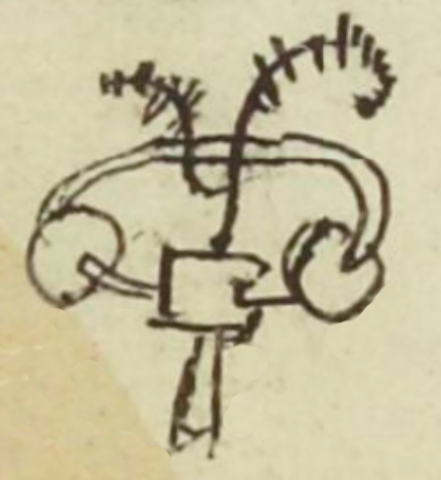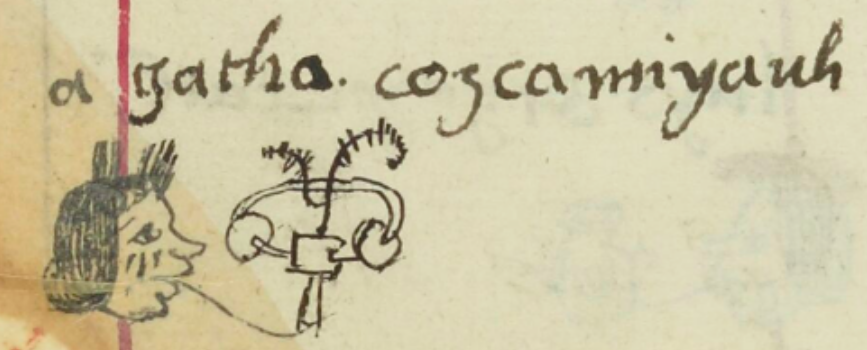Cozcamiyauh (MH537v)
This black-line drawing of the compound glyph for the personal name Cozcamiyauh (“Necklace with Corn Tassel,” attested here as a woman’s name) shows a frontal view of a necklace (cozcatl) with an upright corn blossom or tassel (miyahuatl) running through the center bead.
Stephanie Wood
The maize tassel or flower was very important in Nahua culture. Every phase of the growth of the corn plant was tracked and named. The blossoming of corn was seen as a "season," surely full of hope for sustaining life. There was a metaphor for the maize tassel hanging over everyone. See our dictionary entry. See also the glyph with the necklace of maize cobs, below.
There was apparently a female divine force ("diosa") with this name, as mentioned in a 1908 issue of the Anthropos journal (v. 3, p. 1003): "Cozcamiyauh. A onra desta diosa mataban una muger y desque le havían sacado el corazón, cortábanle la cabesa y azían areyto con ella...." (in honor of this goddess, they killed a woman, and after they had taken out her heart, the cut off her head and they made a fuss with it). It is interesting that this name lived on into the Spanish colonial period given these autonomous-era religious associations.
Stephanie Wood
a gatha cozcamiyauh
Ágata Cozcamiyauh
Stephanie Wood
1560
Jeff Haskett-Wood
necklaces, collares, maize, maíz, corn, flowers, flores, tassels

cozca(tl), necklace, https://nahuatl.wired-humanities.org/content/cozcatl-0
miyahua(tl), corn tassel, https://nahuatl.wired-humanities.org/content/miyahuatl
El Collar de la Flor de Maíz
Stephanie Wood
Matrícula de Huexotzinco, folio 537v, https://www.loc.gov/resource/gdcwdl.wdl_15282/?sp=154&st=image
This manuscript is hosted by the Library of Congress and the World Digital Library; used here with the Creative Commons, “Attribution-NonCommercial-ShareAlike 3.0 License” (CC-BY-NC-SAq 3.0).








